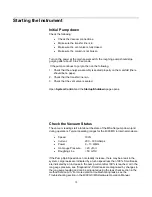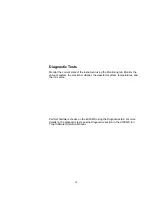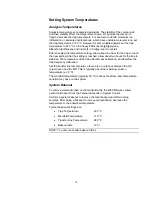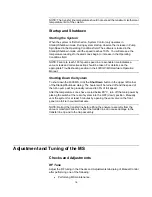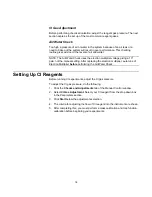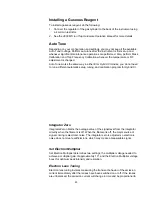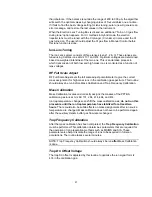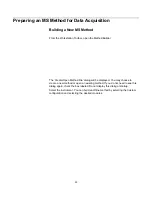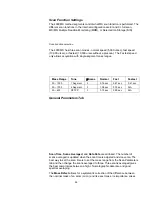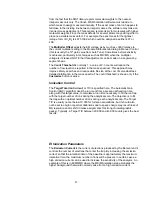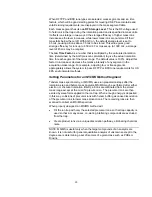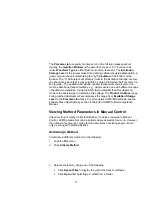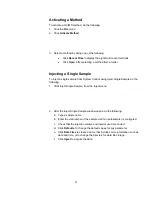
25
Select the Acquisition Data Type
Centroid data is the default acquisition data type, as data handling, library
searching, and spectral comparison can only be done from this type of data.
Centroid data is reported as ion/intensity pairs to one described point.
Profile data is typically used mainly for diagnostic purposes. Profile files are also
approximately 10 times larger than centroid files, but they can be converted to
centroid after acquisition.
Profile data is collected at 10 pts/mz and is displayed as peaks similar to a
chromatogram. The display allows you to observe the true dispersion of the
response and determine if adequate resolution has been obtained.
Edit Chromatographic Time Segments
When the 4000 MS is in Internal Configuration, it can do EI, CI, EI/MS/MS, and
CI/MS/MS in a single run. The Chromatographic Time Segments table allows you
to time-program analysis conditions to get the best results for each segment in
the analysis. Up to 250 time segments can be created for runs up to 650 minutes
in length. By default, there is a Filament/Multiplier Delay segment at the start of
the run so that the system will not be stressed during the elution of the
chromatographic solvent. Following this segment, you could just acquire the
mass spectra in full-scan with a single analysis segment. However, you can tailor
variables such as acquired mass range, insert MS/MS segments for individual
analytes, and otherwise set up the instrument to acquire the best data for each
analyte.
Chromatographic Time Segments Table
Adding or inserting a segment copies all parameters from the previous segment
to the newly created segment. Double-click on the required field to edit the
Segment Description, Start Time, or End time of a segment.
Edit the 4000 MS Method Segments
For advice on performing Internal CI, see the appropriate section in the
4000
GC/MS Software Operation Manual.
Содержание 4000 MS
Страница 2: ......



